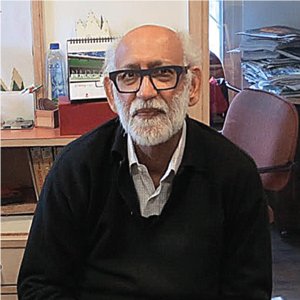
In an interview with Meghna Sharma, special correspondent of The Indian Express, Naresh Khanna, editor of Packaging South Asia (PSA) and chief consultant of IppStar, provides an insight into the world of packaging industry with regards to innovation, technology and government initiatives.
Meghna Sharma: What is the size of the packaging industry in India?
Naresh Khanna: We publish a monthly packaging magazine called Packaging South Asia, so we have a very good idea about the scale of the Indian packaging industry. However, it is
very difficult to put a value on it without defining what we are talking about. Is it the value of the packaging materials produced or consumed in India; does it include the value of picking, forming, filling and sealing industry, which is an in-plant operation for the consumer product companies and at the same time is also outsourced to contract packaging companies; does it count the value of the packaging equipment produced in India, which is extensive and highly respected with global exports? We need to answer these questions before deciding on the size and numbers of the industry.
 We have an industry research company called IppStar, which has very solid numbers because of its continuous primary research of the print, packaging and publishingsegments. But this research is largely proprietary and most of the numbers are under non-disclosure agreements with its global and domestic clients. I can tell you that the Indian packaging industry is very large and that with regards to turnover, it is much larger than the organized pharmaceutical industry in India.
We have an industry research company called IppStar, which has very solid numbers because of its continuous primary research of the print, packaging and publishingsegments. But this research is largely proprietary and most of the numbers are under non-disclosure agreements with its global and domestic clients. I can tell you that the Indian packaging industry is very large and that with regards to turnover, it is much larger than the organized pharmaceutical industry in India.
The difference is that it is much more fragmented and there are only a few players, who are either large or are public limited companies or companies with turnovers above Rs. 500 crore. However, there are several global packaging companies that are present in India, with many more interested in coming. In addition, there are several Indian companies such as Uflex and Essel Propack that have plants in several continents and are amongst the world leaders in their segments. The Indian flexible film industry, that is, films and laminates for packaging, is both an exporter and a global player. It includes players such as Cosmos Films and Jindal Polymers.
MS: Do Indian companies like to opt for innovative packaging and why?

NK: There are some notable Indian innovations such as the small pouches that started out for sampling but became a mainstay for many types of products. However, there are huge
constraints in buying power, logistics and retail formats, which have so far limited many innovations. The Indian preference for fresh vegetables and fruits and their ready availability will always limit the growth of food processing and the packaging that goes along with it. There is no real cold chain in India except for the milk and milk products industry and here, there are many innovations. However, many of the so-called innovations are simply a copy of the packaging seen outside the country, and reverse engineered.
MS: Do we have enough technology for innovative packaging?
NK: In many cases, we have technology but the brand owners are not ready to use it. Ironically, the same global players who comply with stringent laws on packaging materials, including food grade and low migration inks in the rest of the world, sometimes use cheaper substrates and inks in India because of weak laws and enforcement.
MS: Give examples of how innovative packaging has helped a brand grow and some failures as well.
NK: The most innovative packaging in India today is the in-flight packaging of Indigo Airlines, which extends through its branding of everything, uniforms, stairways, ground-handling equipment and fantastic edible products that it sells on its flights with information and catch-phrases. This shows that packaging can be reused, it can be funny, it can be beautiful and desirable – and it’s worth saving. The subject of successful innovations and failures of packaging in India needs to be discussed in an objective manner. We do this every month in PSA’s design and marketing section where new ideas, materials and concepts are discussed.
MS: What are the government’s initiatives towards the industry?
NK: The government bodies have very poor understanding of the safety, health and environment issues in relation to both the consumer product and the packaging industry. For instance, the Indian government sometimes passes irrational orders without showing any sensible plan or workable initiative for the collection, sorting and recycling of refuse and garbage of which packaging can be both a dangerous as well as a recoverable and recyclable component of value.










